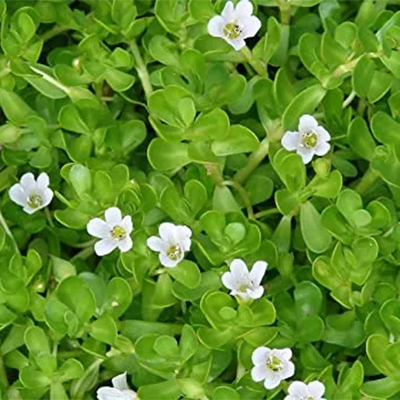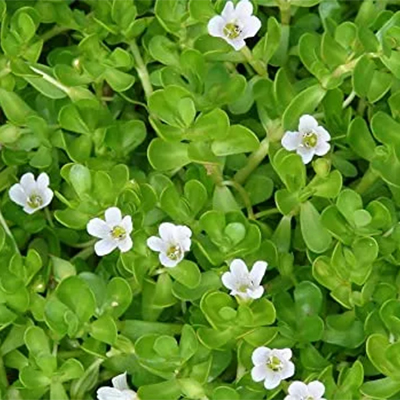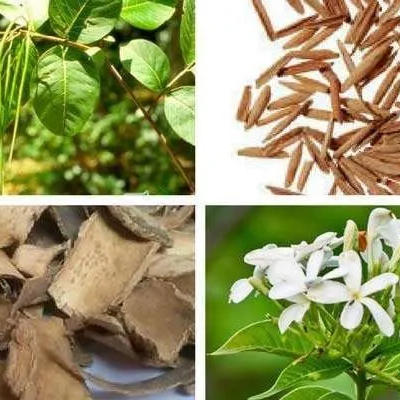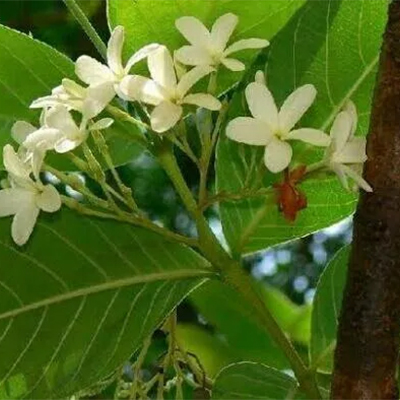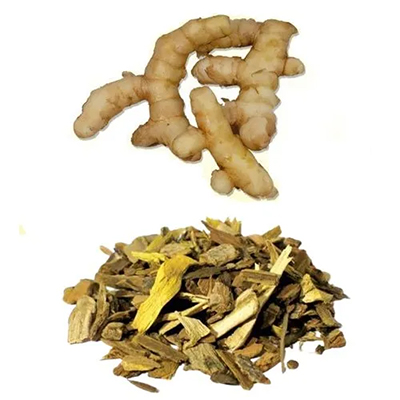On This Page
Brahmi: The neuroprotective and memory enhancer herb
Introduction
Brahmi botanically known as Bacopa monnieri is a perennial, non-aromatic memory enhancer, the neuro- protective herb that belongs to the Scrophulariaceae family. Brahmi has been used to treat brain-related disorders since ancient times. Based on research and development, business esteem, and medical significance Brahmi i.e Bacopa monnieri comes in the second position as per the new report. Brahmi is well distributed in the swamp, wet soil, and shallow water. Bacopa monnieri and Centella asiatica are controversial drugs as both are widely used as Brahmi, but both plants are distinctly different. Brahmi means the energy of Lord Brahma. As per the famous Shodhala Nighantu, Bacopa monnieri is superior to Centella asiatica. In Atharveda Brahmi is considered as Medhya (Atharveda. P. 1/ 44/ 10) and in Yajur Veda Brahmi is mentioned as Santhanothpadaka. Brahmi is an herb with cold potency and Tikta, Madhura, Kashaya Rasa. Recent research revealed that Brahmi consists of saponins, bacoside A, betulic acid, hersaponin, etc due to which it has been used as analgesic, anti-inflammatory, diuretic, anti- convulsant, anti- spasmodic, anti- epileptic, etc.
Basonym of Brahmi
बृह्मण: इयं ब्राह्मी |
The plant is related to intellectuality, and it is a memory enhancer.
Synonyms of Brahmi
- According to habitat
तोय वल्ली- तोये जल प्रधान स्थाने वल्ली लता सन्ति अस्या: |
- According to morphology
मत्स्याक्षी- मत्स्याक्षीव पुष्पम अस्या: |
The flowers of Brahmi resemble the eyes of fish.
- According to properties and action
तिक्त लोणिका- तिक्ता सति लोणिका |
Brahmi is the bitter type of Lonika.
व्यस्था – वयसि तिस्थ्तीन्या |
Brahmi is an excellent rejuvenator.
सोम वल्ली – सोम स्यव वल्लिव |
Brahmi is filled with good qualities.
Regional names of Brahmi
- Thyme-leaved gratiola, Indian pennywort, Golden apple (English)
- Jalnim (Hindi)
- Brahmi Sak, Nira- Brahmi (Bengali)
- Niru Brahmi (Kannada)
- Brahmi (Malayalam)
- Nirbrahmi (Marathi)
- Neera Brahmi (Tamil)
- Sambarenu (Telugu)
- Nira Brahmi (Malayalam)
Botanical Name
Bacopa monnieri L., Herpestis monniera H. B. K
Herpestis means creeping and monnieri means Moni- Necklace.
Other synonyms of Bacopa monnieri are Lysimachia monnieri L. Cent., Gratiola monnieri (L.) L., Monniera cuneifolia Michaux.
Family
Scrophulariaceae (Brahmi Kula)
Ayurveda reference for Brahmi (Bacopa monnieri L.)

Scientific classification of Brahmi
| Kingdom | Plantae |
| Class | Dicotyledons |
| Subclass | Gamopetalae |
| Series | Bicarpellatae |
| Order | Perstenales |
| Family | Scrophulariaceae |
| Genus | Bacopa |
| Species | monnieri |
Classification of Brahmi as per Charaka and Sushruta
- Charaka: Balya Mahakshaya, Praja Sthapana Mahakshaya, Sangya Sthapana Mahakshaya.
- Sushruta: Veervarthadi Gana.
Brahmi’s description in Brihtrayi
Centella Asiatica (Linn.) Urban, Syn. Hydrocotyle asiatica Linn. is also being used as Brahmi in some places but now it has been identified with MandukaparnI. Two other species of Hydrocotyle i.e. H. rotundifolia Roxb. And H. Javanica Thunb. are also being used in some parts or other as Brahmi or Mandukaparni.
| Charaka | Shusruta |
Vagbhata (Ashtang Hridya) |
| C. S. Su. 4/ 49 | S. S. Chi. 7/ 24 | A. H. Chi. 19/ 34 |
| C. S. Sa. 8/ 29, 89, 94 | S. S. Chi. 10/ 8 | A. H. U. 1/ 9, 27, 42, 44 |
| C. S. Chi. 1. 3/ 23 | S. S. Chi. 28/ 5, 6 | A. H. U. 3/ 53 |
| C. S. Chi. 1. 4/ 5 | S. S. Su. 8/ 106 | A. H. U. 6/ 23, 38 |
| C. S. Chi. 7/ 69 | S. S. Sa. 10/ 45 | A. H. U. 7/ 24, 34 |
| C. S. Chi. 10/ 23, 60, 62 | S. S. U. 62/ 30 | A. H. U. 30/ 23 |
| C. S. Chi. 18/ 40 | S. S. Chi. 12/ 5 | A. H. U. 39/ 50 |
| S. S. Chi. 17/ 12, 19, 27 | A. H. U. 40/ 51 |
Brahmi’s description in Brihtrayi as Mandukparni
This is somewhat like Brahmi in properties, and hence it has been used as such in many parts of the country. Its tribal name Vengasaga (frog’s vegetable) is also suggestive of its original name Mandukaparni.
| Charaka | Shusruta |
Vagbhata (Ashtang Hridya) |
| C. S. Su. 4/ 50 | S. S. Su. 20/ 4 | A. H. Su. 6/ 76 |
| C. S. Su. 27/ 93 | S. S. Su. 42/ 18 | A. H. Chi. 3/ 120 |
| C. S. Vi. 8/ 150 | S. S. Su. 46/ 262, 264, 335 | A. H. U. 39/ 18, 44, 164 |
| C. S. Sa. 8/ 59, 70 | S. S. Chi. 9/ 5 | |
| C. S. Chi. 1. 1/ 47, 57 | S. S. Chi. 28/ 4 | |
| C. S. Chi. 1. 3/ 30 | ||
| C. S. Chi. 11/ 92 | ||
| C. S. Chi. 13/ 179 | ||
| C. S. Chi. 23/ 224 |
Brahmi’s description in Brihtrayi as Matsyak Saka/ Matsyakhyaka
The identity of Matsyaksaka has not been decided with the result that in the Nighantus and the commentaries of the texts several drug names such as Brahmi, Pattura, Andri and Indrani have been considered as its synonyms, and the plants rightly or wrongly believed to be their sources have been indirectly suggested to be used in its place. Its utility as a nervine tonic and aquatic or semi-aquatic habitat appears to be the important features of Matsyaksaka. Some plant species growing in near-aquatic environments such as those of Hydrocotyle, Enhydra, Alternanthera, and Polygonum are consequently being used in its place. Bopadeva has mentioned that Pattura and Matsyaksaka, which are different drugs, have been used in A. H. under these very names and have no other synonyms. If this were correct, all other drug names mentioned above should be left out of consideration. Bhavamisra, while describing this drug, appears to identify it with Enhydra fluctuations Lour. Called Helanca in Bengal while Cara identifies it with Salinca which is the Bangala name for Alternanthera sessilis (Linn.) R. Br. Enhydra, also considered a nervine tonic in Bengal is, thus, better entitled to be identified as Matsyaksaka.
Charaka Samhita: C. S. Chi. 1. 3/ 23
Sushruta Samhita: S. S. Sa. 10/ 68
Ashtanga Hridya: A. H. U. 1/ 48, A. H. U. 39/ 50
Historical background of Brahmi
In Vedic period, Atharva Parisista (A.P. 1/ 44/ 10) and other various texts quote Brahmi as Medhya Dravya. The controversy on Brahmi and Mandukaparni is never-ending. Charaka enumerated Indri and Brahmi together in the Pratisthapana group which may be Centella asiatica and B. monnieri respectively. The Nighantu writers did try to remove the controversy by identifying Brahmi and Manduki separately. Sodhala considered that the former is a superior variety to the latter. Bhavamishra quotes that Mandukaparni has properties similar to those of Brahmi. At least now there should be no controversy in their identity since both are in abundant use as Medhya Rasayanas.
Controversy regarding Brahmi
The number of plants have been described in Ayurveda as Medhya (Brain tonic). Brahmi and Mandukaparni are two popular names in this category. The controversy on Brahmi and Mandukaparni is never-ending. In Ayurvedic classical texts like Caraka Samhita, Sushruta, and Ashtanga Hridya, Brahmi and Mandukaparni have been described as two different plants. For example, Charaka enumerated Andri and Mandukaparni together in the Praja Sthapana Mahakshaya which may be considered as Bacopa monnieri and Centella asiatica respectively. The controversy may be because of synonyms and similar properties. But these plants can be distinguished easily:
| Criteria | Brahmi | Mandukaparni |
| Botanical Name | Bacopa monnieri | Centella asiatica |
| Family | Scrophulariaceae | Apiaceae |
| Types of plant | Prostate succulent herb | Prostate herb and rooting at the nodes. |
| Leaves | simple, opposite, decussate, fleshy, and entire. | Reniform shaped, usually glabrous and crenate margins. |
| Flowers | White or pinkish | White |
| Fruit and seeds | Capsule and many-seeded | Compressed |
External morphology of Bacopa monnieri
- Habit- Succulent, spreading, prostrate, or creeping glabrous annual herb. Branches are numerous, upright, and have adventitious roots at almost every node.
- Stem- The stem of Brahmi is green with internodes of varying lengths.
- Leaves- simple, opposite, decussate, almost sessile, spathulate or ovate – obovate shape, entire and fleshy. Leaves are obscurely veined and dotted with minute spots 0.5 to 2 cm long and 0.5 cm wide
- Flowers- Axillary, solitary on long slender pedicels of varying lengths usually longer than the leaves. Flowers are Whitish or pale bluish. Petals are twice as long as the sepals. Stamens are 4. The ovary is bicarpellary syncarpous, two-chambered with many ovules in each cell on the swollen placenta.
- Fruits- Capsule, ovoid, small, 2-celled, 2-valved, and glabrous.
- Seeds- Oblong, minute, and many.
Flowering and fruiting time
Summer season.
Distribution of Brahmi
Brahmi is found throughout India growing naturally in the planes as well as in hills up to 1200- meter altitude, particularly in the areas having more moisture. It is very common in Karnataka, Maharashtra, Orissa, Uttar Pradesh, Bihar, etc.
The useful part of Brahmi
Panchang
Fresh herbs consist of quadrangular, succulent, creeping stems, up to 8 mm thick, bearing fleshy leaves occurring in whorls at nodes; the leaves are decussate, spathulate, oblong, obovate, and up to 2.5 cm in length; the stems bear clusters of white thin wiry roots on the underside; flowers are solitary, axillary and have a pink perianth. The dried material is yellowish with the majority of leaves detached. It has a mild odor and a bitter taste.
Important phytoconstituent of Brahmi
Whole plant contains- D-Mannitol, Saponin, Betulic acid, Beta- sitosterol, Stigmasterol, Stigmastanol, Bacoside A, Bacoside, B (Saponins), Monnierin, Hersaponin, Nicotine, Bacogenin- A Betulinic acid, y-Sitosterol, Mannitol.
Leaves- Brahmine and herpestine (Alkaloids).
Recent research on Brahmi
- The study is conducted to evaluate the neuroprotective potential of Bacopa monnieri (BM), an Indian traditional medicinal plant effective against cognitive impairment, in colchicine-induced Dementia. The results suggest the therapeutic potential of Bacopa monnieri in the treatment of AD-associated cognitive decline. Saini N, Singh D, Sandhir R. Neuroprotective Effects of Bacopa monnieri in Experimental Model of Dementia. Jun 15. Neurochemistry Res. 2012 Sep; 37 (9): 1928- 37. Epub 2012.
- A study was done to test the hypothesis that BM Extract (BME) could offset neurotoxicity-induced oxidative dysfunctions in the developing brain in a rotenone (ROT) mouse model. It is suggested that Bacopa monnieri may be effectively exploited as a prophylactic/therapeutic adjuvant for neurodegenerative disorders involving oxidative stress. Shinomol GK, Mythri RB, Srinivas Bharath MM, Muralidhara. Bacopa monnieri extract offsets rotenone-induced cytotoxicity in dopaminergic cells and oxidative impairments in the mic brain. Cell Mol Neurobiology 2012 Apr; 32 (3):455- 65. doi:10.1007/s 10571-011- 9776-0. E pub 2011 Dec 10.
- An n-butanol extract of the plant (nBt-ext BM) was analyzed and found to contain Bacoside A (Bacoside A3, Bacopaside I and Bacopasaponin C). The effects of the BM extract were then studied on morphine-induced hyperactivity as well as dopamine and serotonin turnover in the stratum since these parameters have a role in opioid sensitivity and dependence. These findings suggest that nBT- ext BM has an antidopaminergic/ serotonergic effect and may have potential beneficial effects in the treatment of morphine dependence. Rauf K, Subhan F, Sewell RD. A Bacoside containing Bacopa monnieri extract reduces both morphine hyperactivity plus the elevated striatal dopamine and serotonin turnover. Phytotherapy Res. 2012 May; 26 (5): 758- 63. doi: 10.1002/ ptr. 3631. Epub 2011 Nov 22.
- A study is done on Antihyperglycemic activity, in vivo antioxidant potential, effect on hemoglobin glycosylation, estimation of liver glycogen content, and in vitro peripheral glucose utilization of bacosine, a triterpene isolated from ethyl acetate fraction (EAF) of the ethylenic extract of Bacopa monnieri. The study suggested that bacosine might have insulin-like activity and its hyperglycemic effect might be due to an increase in peripheral glucose consumption as well as protection against oxidative damage in alloxanized diabetes. Ghosh T, Mainly YK, Singh J, the Antihyperglycemic activity of bacosine, a triterpene from Bacopa monnieri in alloxan-induced diabetic rats. Plant Med. 2011 May, 77 (8), 804: 8. E Pub. 2010, Dec 10.
- In this study, the neuroprotective properties of Bacopa monnieri against rotenone-induced oxidative damage and neurotoxicity are studied, Flies (Oregon K strain, adult males) exposed to a standardized Bacopa monnieri powder for 7 days in the diet exhibited significant diminution in the levels of endogenous oxidative markers viz, malondialdehyde, hydroperoxide, and protein carbonyl content. Hosamani R, Muralidhara. Neuroprotective efficacy of Bacopa monnieri against rotenone-induced oxidative stress and neurotoxicity in Drosophila melanogaster. Neurotoxicology. 2009 Nov; 30 (6): 977. 85. Epub 2009 Sep 8.
- The crude alcoholic extract (10-200 mg/100 gm b. W.) had a sedative effect on frogs and dogs. The extract also possesses cardiotonic, Vaso constrictor, and neuromuscular blocking actions in frogs. A glycoside (saponin) was also found to have cardiotonic action in normal as well as hypodynamic frogs’ hearts (Malhotra & Das 1959).
- Alcoholic extract of the whole plant (50 mg/kg i.p.), exhibited a tranquilizing effect on albino rats. The same effect was observed in dogs. When the above dose was given i.v. The extract showed smooth muscle relaxation of rat ileum. At 20 mg/kg, a transitory fall in BP was seen (Aithal & Sirsi, 1961).
- The total alkaloidal fraction (0.2-2.0 mg/kg i.v.), produced an initial fall followed by a rise in the BP of dogs. Initial stimulation of respiration was followed by slight depression. Tachyphylaxis was observed with repeated administration of the drug. The alkaloidal fraction had a spasmodic effect on the isolated ileum of rabbits (Das et al., 1961).
- Hersaponin showed a sedative effect in mice. It did not protect rats against electroshock and mice against metamizole seizures (Malhotra et al., 1960 & 1962).
- Hersaponin was also found to deplete the rat brain of its noradrenaline and 5-HT content, the action being similar to that of reserpine (Malhotra et al., 1961).
- A dose of 10 mg/kg i.p. of alcoholic extract improved the process of motor learning in rats (Prakash & Sirsi, 1962).
- The tranquilizing property of the extract was found to be weaker than that of chlorpromazine (Ganguly & Malhotra, 1967 & 1969).
- The alcoholic extract of the whole plant was found to have anti-cancer activity against Walker carcinosarcoma 256 (i.m.) in the rat. (Bhakuni et al, 1969).
- Plant extract showed significant barbiturate hypnosis potentiation in rats (J. Res. Ind. Med. Yoga & Homoeopathy. 1979, 14, 1).
- Brahmi (40 mg/kg. p.o. for 3 or more days) treated rats showed better acquisition, improved retention, and delayed extinction (J. Ethnopharmacology. 1982, 5, 205).
Rasa Panchaka of Brahmi
| Rasa (Taste) | Tikata (bitter), Kashaya (Astringent), Madhura (sweet) |
| Guna (Virtue) | Laghu (light), Sara (mobility) |
| Virya (potency) | Sheeta (cold potency) |
| Vipaka (post-digestion) | Madhura (sweet) |
| Prabhava | Medhya |
Dosha Karma of Brahmi
- Tridosha Shamaka
Vatahara because of Madhura Vipaka, Pittahara because of Tikta, Kashaya and Madhura Rasa, Madhura Vipaka and Sheeta Virya. Kpahahara because of Tikta, Kashaya Rasa.
Karma (Actions) of Brahmi
Medhya, Ayushkara, Rasayana, Smariti Vardhaka, Swarya, Kusth Ghana, Meha Ghana, Visha Hara, Hridya, Shotha Hara, Kandughana, Jwara Hara, Swasa Hara, Kasa Hara.
Prayogarha Vyadhi (Therapeutic indication) of Brahmi
- Unmada
- Apasmara
- Yoshapasmara
- Masurika
- Pidika
- Balaroga
- Smrtivikara
- Dourbalya
- Kustha
- Tva Vikara
- Kandu
- Pandu
- Kamala
- Pliha Roga
- Vriddhi
- Sotha
- Kasa
- Svasa
- Svarabhanga
- Prameha
- Aruchi
- Javara
- Udara Roga
Aamyik Paryog (Therapeutic uses) of Brahmi
Unmaad (Insanity): Brahmi, Kushmanda fruit, Vacha, and Shankhpushpi-juice of these separately mixed with Kustha and honey removes insanity. (Vrinda Madhava. 20/ 3, Sharangdhara Samhita. 2. 1. 18)
Apsmara (Epilepsy):
- Old ghee processed with Brahmi juice, Vacha, Kustha, and Sankhapuspi alleviates insanity, inauspiciousness, epilepsy, and sinful conditions. (Charaka Samhita. Chikitsa Sthana. 10/ 25)
- One should use oil and garlic, Shatavari with milk, Brahmi juice, Kustha, and Vcaha with honey. (Charaka Samhita Chikitsa Sthana. 10/ 64)
- Pancha Gavya Ghrta mixed with Brahmi juice should be used. Moreover, Sankhapuspi and other intellect promoting Rasayanas should also be taken. (Charaka Samhita Chikitsa Sthana. 10/ 62)
- Brahmi is the best remedy for epilepsy. (Ashtanga Hridya UttaraTantra. 40/ 51)
- Brahmi- Ghrita. (Vrinda Madhava. 21/ 15)
Bala Roga (Pediatric management): Brahmi, Mandukparni, Triphala, Chitraka, Vacha, Satapuspa, Shatavari, Danti, Nagabala, and Trivit- anyone should be taken with honey and ghee for promoting intellect. (Kashayapa Samhita. Purva Khanda. 5)
Masurika (pox): Juice of Brahmi or Hilamocika mixed with honey should be taken. (Vrinda Madhava. 56/ 2)
As Rasayana (Rejuvinator): Brahmi- Rasayana. (Sushruta Samhita Chikitsa Sthana. 28/ 5-6)
Benefits of Brahmi
- It is a ferbrifuge, nervine, bitter and cardiac tonic. Herb is useful in Apsmara (epilepsy), Jwara (fever), Unmaad (insanity), and Mansika Vyadhi (nervine and mental diseases). The herb is reputed as a brain tonic and a good herbal drug for promoting memory power and mental faculties.
- The leaves and whole plant are used in various nervine and mental complaints, and they are considered very useful for brain power, skin, complexion, and general restorative or rejuvenating drugs.
- The whole plant is a nervine tonic, it is used in asthma, epilepsy, hoarseness, insanity, and diarrhea.
- The stems and leaves are considered useful against snakebite. Whole plants or leaves are useful in dermatosis and other skin affections.
- The hot poultice of the plant is applied to acute bronchitis, cough, and chest complaints.
- Dried leaves are effectively useful in debility, nervous breakdown, and other low dynamic conditions. They are also especially suggested for students and intellectuals to tone up the mind and mental power including memory.
- The leaves are given in stoppage of urine accompanied by obstinate costiveness. The leaf juice is applied to swellings, and as a good liniment for rheumatism (mixture of petroleum and leaf- juice). The plant drug is bitter, pungent, heating, emetic, and laxative; useful in bad ulcers, tumors, ascites, spleen enlargements, indigestion, edema, inflammation, leprosy, anemia, snakebite, scorpion-sting, biliousness and disorders of Vata and Kapha.
- The herbal drug is useful in syphilis, scabies, leukoderma, diarrhea, and pyrosis and it purifies blood, and it is maturant and expectorant.
- The juice of leaves is given to infants suffering from catarrh or severe bronchitis (giving relief by causing vomiting and purging).
- The whole plant is useful in hysteria and other similar complaints. The fomentation of the whole plant is applied for erysipelas and elephantiasis.
Benefits of Brahmi on different systems of bodies
- Nervous system: Brahmi is a valuable plant for the brain and entire nervous system. Mania and epilepsy are two conditions that require Brahmi. It also helps in depression and mental retardation, by enhancing intelligence.
- Digestive system: Brahmi is slightly Kashaya (astringent) and hence useful in Atisara (diarrhea) due to vitiated Vata. Brahmi may suppress Kshudha (appetite), hence Deepan Dravya should be given along with it.
- Respiratory system: Especially in children, for cold and cough, 1 teaspoonful of Brahmi- juice is given to induce vomiting and give relief. When Svara Bheda (hoarseness of voice) results from Ati Vachya (excessive talking), pills made from the leaves of Vasa, Pippali, Brahmi, Haritaki, and Vacha are chewed which gives relief in Swara Bheda.
- Cardiovascular system: In small doses, it has cardo-tonic properties. Brahmi may result in Uccha Rakta Chapa (increase in blood pressure).
- Urinary system: Diuretic.
- Temperature: In Srilanka, Brahmi is used for fever.
- Satmikaran: Brahmi is a brain tonic. It enhances memory, intelligence, and longevity.
Matra (Therapeutic administration and dosage) of Brahmi
- Swarasa (juice): 10- 20 ml
- Churna (powder): 5- 10 gram
- Kwatha (decoction): 50- 100 ml

Have A Health Issue?
Consult Online
- Dr. Sahil Gupta (B.A.M.S., M.H.A.)
Ayurvedic Allergy Specialist
CEO & Founder of IAFA®
Classical reference of Brahmi
Bhava Prakasha Nighantu Guduchyadi Varga- 279
Synonyms
ब्राह्मी कपोत वङ्का च सोम वल्ली सरस्वती |
मण्डूकपर्णी माण्डूकी त्वाष्ट्री दिव्या महौषधी ||
Bhava Prakasha Nighantu Guduchyadi Varga- 280- 281
Properties and action
ब्राह्मी हिमासरा तिक्ता लघु मेध्या च शीतला |
कषाया मधुरा स्वादुपाका आयुष्या रसायनी ||
स्वर्या स्मृततिप्रदा कुष्ठ पाण्डु मेहास्त्र कासजित् |
विषशोथज्वरहरी त्वद मण्डूकपर्णिनी ||
Kaiydeva Nighantu Aushadi Varga, 722- 723
ब्राहमी शीता सरा तिक्ता कषाया मधुरा लघु: |
मेध्या स्वर्या स्वादुपाका हद्यायुष्या रसायनी ||
मति स्मृति प्रदा हन्ति कुष्ठ कण्डु ज्वरं मलान् |
शोफारुचि विषश्वासकासमोहास्रपाण्डुता: ||
Raja Nighantu Parpataadi varga, 66- 67
ब्राह्मी हिमा कषाया च तिक्ता वातास्रपित्तजित् |
बुद्धिं प्रज्ञाम च मेधां च कुर्य्यदायुष्य बर्द्धनी ||
ब्राह्मी तु क्षुद्र पत्राण्या लघुब्राह्मी जलोदभवा |
ब्राह्मी तिक्तरसोष्णा च सरा वातामशोफजित् ||
Priya Nighantu, Shatpushpadi varga, 119
ब्राह्मी हृद्या सरा तिक्ता लघु मेध्या च शीतला |
रसायनी कुष्ठमेह शोथपाण्डुगदापहा ||
Sushruta Samhita, Chikitsa Sthana, 28/ 5, 6
रसायने
ब्राह्मीरसायनम् ।
Vrinda Madhava, 20/ 3, Sharangdhara Samhita, 2- 1- 18
उन्मादे
ब्राह्मीकूष्माण्डी फलषड् ग्रंथ शंख पुष्पिकास्वरसा: |
उन्मादहते दृष्टा: पृथगेते कुष्ठमधुमिश्रा: ||
Kashayapa Samhita, Purva, 5
मेधादि जनने बालोपचरणीये
ब्राह्मी मण्डूकपर्णी च त्रिफला चित्रको वचा |
शतपुष्पा शतावर्या दन्ती नागबला त्रिवृत ||
एकैकं मधुसर्पिभ्यां मेधाजननमभ्यंसेत् |
Ashtanga Hridya, Uttara Tantra, 1/ 27
धारयेदोषधी: श्रेष्ठा ब्राहम्वैन्द्रीजीवकादिका: |
हस्ताभ्यां ग्रीवयां मूर्ध्ना विशेषात् सतत वचाम् ||
आयुर्मेधास्मृतिस्वास्थ्यकरीं रक्षो अभिरक्षणीम् |
Vrinda Madhava, 56/ 2
मसूरिकायाम्
सक्षौद्रं पाययेद् ब्राहम्या: रसं वा हैलमोचिकम् |
Charaka Samhita, Chikitsa Sthana, 10/ 25
अपस्मारे
ब्राह्मीरसवचाकुष्ठ शंखपुष्पीभिरेव च |
पुराणघृतमुन्मादालक्ष्म्यापस्मारपापनुत् ॥
Vrinda Madhava, 56/ 2
ब्राह्मीघृतम् ।
Ashtanga Hridya Uttara Tantra, 40/ 51
विसंस्मृतिं ब्राह्मी ।
Charaka Samhita, Chikitsa Sthana, 10/ 62
प्रयुज्ज्यात्तैललशुनं पयसा. वा शतावरीम् |
ब्राह्मीरसं, कुष्ठरसं वचां वा मधुसंयुत्ताम् ||
तत् सेव्यं शंखपुष्पी च यच्च मेध्यं रसायनम् |
Raja Nighantu Parpataadi varga, 66
ब्राह्मी गुणा
ब्राह्मी हिमा कषाया च तिक्ता वातास्रपित्तजित् |
बुद्धिं प्रज्ञां च मेधां च कुर्यादायुष्यवर्धिनी ||
Raja Nighantu Parpataadi varga, 67
क्षुद्र (लघु) ब्राह्मीगुणाः
ब्राह्मी तु क्षुद्रपत्रा्न्या लघुब्राह्मी जलोदभवा |
ब्राह्मी तिक्तरसोष्णा च सरा वातामशोफजित् ||
Dhanwantri Nighantu
ब्रह्मायायुष्या: हिमा मेध्या कषाया तिक्तका लघु: |
स्वर्या स्मृतिप्रदा कुष्ठ पाण्डु मेहास्त्रकासजित् ||
Chakra Dutta, Rasayana Adhikara, 25/ 32
मेध्यरसायनार्थ सारस्वतघृतम् (ब्राह्मीप्रधानघटक )
Chakra Dutta Apsmara Adhikara, 21/ 13
अपस्मारे ब्राह्मीरसम्
ब्राह्मीरसश्च मधुना सर्वापस्मारभेषजम् |
Charaka Samhita Chikitsa Sthana, 10/ 62
अपस्मारें (मेध्यरसायनम्)
ब्राह्मी स्वरसयुक्त यत् पञ्च गव्यमुदाहहतम् |
तत् सेव्यं शंखपुष्पी च यच्च मेध्यं रसायनम् ||
Charaka Samhita Chikitsa Sthana, 10/ 62
अतत्त्वाभिनिवेशे
पर्युज्जयात त्तैललशुनं पयसा वा शतावरीम् |
ब्राह्मीरसं कुष्ठ रसं वचां वा मधुसंयुत्ताम् ||
Sushruta Samhita Chikitsa Sthana, 28/ 5
मेध्यायुष्यकामाय ब्राहमी
हत् दोष एषागारे प्रविश्य: प्रतिसंसृष्टभक्तो |
ब्राह्मीस्वरसमादाय सहस्रसम्पात्ताभिहुतं कृत्वा
यथा बलमुपयुज्ञीत । औषधीश्च पराहे यवागूम-
लवणा पिबेत | क्षीरसात्म्यो वा पयसा भुजजीत |
एषाम सप्त रात्रं पयुज्य ब्रह्मा वर्चसी मेधावी भवति |
द्वितीयं सप्तरामुपयुज्य ग्रन्थमीप्सितमुत्पादयति |
नष्ट चास्य प्रादुर्भवति ।
तुतीयं सप्तरात्रमुपयुज्य द्विरुच्चारित शतमप्यवधारयति |
एष मेव् विंशतिरात्रमुपयुज्य अलक्ष्मी अपक्रमति |
मूर्तिमन्तौ चैन वाग्देवी अनुप्रविशति |
सर्वाश्चैन श्रुतय: उपतिष्ठन्ति |
Bhava Parkasha Apsmara Adhikara, 23/ 18
अपस्मारे
ब्राह्मीघृतम्
ब्राह्मीरसवचाकुष्ठ शंखपुष्पी श्रृत॑ घृतम् |
पुराण स्यादपस्मारोन्मादग्रहहरं परम् ||
Chakradutta Vata Vyadhi Chikitsa, 21/ 30
ब्राह्मीघृतम
ब्राह्मीरसे वचाकुष्ठ शंखपुष्पीभिरिव च |
पुराण मेध्यमुन्मादग्रहापस्मारनुद् घृतम् ||
Vanga Sena, Chakra Dutta, Masurika Chikitsa, 54/ 2
मसूरिकायाम्
सक्षौद्रं पाययेद् ब्राहम्या: रसम् |
Shodhala Granthya Adhikara
पिटिकायाम्
रसौ मण्डूकपर्ण्या तु प्रलेपान् पिटिकामयम् |
…सम्प्रणाशयेत् |
Chakradutta
उन्माद
ब्राह्मी कुष्मांडो …स्वरसा: उन्मादहता: |
दृष्टा पृथगेते कुष्ठमधुमिश्रा: |
Charaka Samhita Chikitsa Sthana, 16/ 88
अपस्मारे
पयसा वा ‘ब्राह्नीरसम् |
Charaka Samhita Chikitsa Sthana, 108/ 176
रसायन
मण्डूकपर्ण्या: स्वरस: प्रयोज्य: क्षीरेण….|
Charaka Samhita Chikitsa Sthana, 16
पुष्ट आयु बल आरोग्य करतवे
मण्डूकपर्ण्या: कल्पो अथ शुण्ठीमधुकयोस्तथा |
Charaka Samhita Chikitsa Sthana, 18
उदरे
त्रिवृन्मण्ड्कपर्ण्याश्च शाकं स्वरसोदकसाधितम् |
निरम्ललवण स्नेहम स्विन्नस्विन्नमनन्नभुक् ||
मासमेक तत श्चैव तृषित: स्वरसं पिबेत् ||
Charaka Samhita Chikitsa Sthana, 1- 3/ 30
मेध्यरसायनम्
मण्डूकपर्ण्या: स्वरस: प्रयोज्य: क्षीरिण यष्टीमधुकस्य चूर्णम् |
अप्युप्रदान्यामयनाशनानि बलाग्रिवर्णस्वरवर्धनानि |
मेध्यानि चैतानि रसायनानि….||
Sushruta Samhita Chikitsa Sthana, 28/ 4
मेधायुष्यकामाय मण्डूकपर्णी
हत दोष एवं प्रतिसंसृष्टभक्त: यथाक्रमम् आगारं प्रविश्य ‘मण्डूकपर्णी स्वरसमादाय सहस्रसद्गाताभिहूतं कृत्वा यथाबलं पयसा आलोड्य पिबेत् । पयो अनुपानं वा तस्यां जीर्णायां यवान्न पयसोपयुज्जित । तिलैरवा सह
भक्षयित्वा त्रीन मासान् पयो अनुपानं जीर्णें पय: सर्पिरोदन इत्याहार: एवमुपयुज्जन् ब्रह्मवर्चसौ – श्रुतिनिगादौ भवति, शतवर्षमायुरवाप्रोति |
त्रिरात्रोपोषितश्च त्रिरात्रमेतां भक्षयेत् त्रिरात्रादुर्ध्व पय: सर्पिरिति चोपयुज्जीत।
बिल्वमात्रं पिण्ड॑ वा पयसा अलोडथ पिबेत्। एवं दशरात्रमुपयुज्य मेधावी शतवर्षायु: भवति।
Vrinda Madhava, 20/ 3, Sharangdhara Samhita, 2- 1- 18
उन्माद
ब्राह्मी कृष्माण्डीफलषड्न्थाराज्जपुष्पिकास्वरसा: |
उन्मादहतों दृष्ट: पृथगेते कुष्ठ मधु मिश्रा ||
Specific Formulation of Brahmi
- Brahmi Ghrita for Unmada and Apsmara.
- Kumara Kalyanaka Ghrita for Medhya, Rasayanartha
- Brahmi vati for Mansika Roga, Jwara
- Smriti Sagar Rasa for Apsmara
- Saraswatarishta for Apsmara and Unmada
- Brahmi Arka for Sosha and Pandu
- Manasamitra Vatakam for Apsmara and Unmada
- Brahmi Drakshadi Kwatham for Unmada and Apsmara
Suggestive reading regarding Brahmi
- Mukhgerjee, Arun & Gombar, Vipla & Shamsi, Yasmeen & Gupta, Meena & Sinha, Sumit. (2017). Effectiveness of Brahmi in Various Illnesses: Review Paper. Herbal Medicine: Open Access. 03. 10. 21767/ 2472- 0151. 100024.
- Choudhary, Shailja & Kumari, Isha & Thakur, Shifali & Kaurav, Hemlata & Chaudhary, Gitika. (2021). BRAHMI (BACOPA MONNIERI)– A POTENTIAL AYURVEDIC COGNITIVE ENHANCER AND NEUROPROTECTIVE HERB. International Journal of Ayurveda and Pharma Research. 41- 49. 10. 47070/ijapr. v9i5.1917.
- Patel, Saurabh & Birwal, Preeti & Basu, Santanu & Pawar, Devendra & datir, Rupesh & Deshmukh, Gajanan. (2018). Brahmi (Bacopa monnieri) is a functional food ingredient in the food processing industry. Journal of Pharmacognosy and Phytochemistry. 7. 189- 194.
- Chavan, Chetan & Thaker, Chanakya & Chaudhari, Chetan. (2020). Determination of Bromide from Bacopa Monnieri (Brahmi) and Other Herbal Plants by Ion Chromatography. International Journal of Science and Research (IJSR). 9. 1591- 1595. 10. 21275/ SR20426103453.
- Chaudhari KS, Tiwari NR, Tiwari RR, Sharma RS. Neurocognitive Effect of Nootropic Drug Brahmi (Bacopa monnieri) in Alzheimer’s Disease. Ann Neurosci. 2017 May; 24 (2):111- 122. doi: 10.1159/ 000475900. Epub 2017 May 12. PMID: 28588366; PMCID: PMC5448442.
- Ryman DC, Acosta-Baena N, Aisen PS, Bird T, Danek A, Fox NC, et al. Symptom onset in autosomal dominant Alzheimer disease: a systematic review and meta-analysis. Neurology. 2014; 83: 253– 260.
- Chaudhari KS, Tiwari NR, Tiwari RR, Sharma RS. Neurocognitive Effect of Nootropic Drug Brahmi (Bacopa monnieri) in Alzheimer’s Disease. Ann Neurosci. 2017 May; 24 (2):111- 122. doi: 10. 1159/ 000475900. Epub 2017 May 12. PMID: 28588366; PMCID: PMC5448442.
- Dubey T, Chinnathambi S. Brahmi (Bacopa monnieri): An ayurvedic herb against Alzheimer’s disease. Arch Biochem Biophys. 2019 Nov 15; 676: 108153. doi: 10.1016/ j.abb.2019. 108153. Epub 2019 Oct 14. PMID: 31622587.
- Tushar Dubey, Subashchandrabose Chinnathambi, Brahmi (Bacopa monnieri): An ayurvedic herb against Alzheimer’s disease, Archives of Biochemistry and Biophysics, Volume 676, 2019, 108153, ISSN 0003-9861, https://doi.org/10.1016/j.abb.2019.108153. (https://www.sciencedirect.com/science/article/pii/S0003986119307647)
- Thorat, Balaji & Bagkar, T & Patil, R. (2018). “Brahmi” is The memory booster medicinal herb. Journal of Medicinal Plants Studies. 6. 185- 187.
- Yadav, Kapil & Ramachandra Reddy, Konduru. (2014). EVALUATION OF BRAHMI GHRITA KALPA IN AYURVEDIC LITERATURE. Journal of Biological & Scientific Opinion. 2. 305- 309. 10.7897/ 2321- 6328. 02569.
- Kunjumon, Renju & John, Anil & Baby, Sabulal. (2021). Bacopa monnieri (Brahmi): phytochemistry, used in traditional Ayurvedic formulations.
- Manu, Prabhakar & Kumar Shetty, Suhas & H P, Savitha. (2017). CRITICAL REVIEW ON EFFECT OF BRAHMI GHRITA IN PSYCHIATRIC DISORDERS. International Journal of Research in Ayurveda & Pharmacy. 8. 16-18. 10.7897/2277-4343.08128.
- Beena, Chekunnath & Kanakamany, M.T. & Pv, Dr.Sindhu. (2018). Quality evaluation of important ayurvedic raw drug Brahmi (Bacopa monnieri). Open Access Journal of Medicinal and Aromatic Plants. 9. 18-22.
- Manu, Prabhakar & Kumar Shetty, Suhas & H P, Savitha. (2017). CRITICAL REVIEW ON EFFECT OF BRAHMI GHRITA IN PSYCHIATRIC DISORDERS. International Journal of Research in Ayurveda & Pharmacy. 8. 16-18. 10.7897/2277-4343.08128.
- Yadav, Kapil & Ramachandra Reddy, Konduru. (2013). Critical review on pharmacological properties of Brahmi. International Journal of Ayurvedic Medicine. 4. 92- 99. 10. 47552/ jam. v4i2.238.
- A. Mukhgerjee, Arun & Gupta, Meena & Dogra, Shruti & Sinha, Sumit & Shamsi, Yasmeen. (2017). International Journal of Ayurveda and Pharma Research STUDIES OF BRAHMI BASED UNANI COMPOUND FORMULATION ON AUTISM TO ASSESS ITS EFFICACY. International Journal of Ayurveda and Pharma Research. 5. 62-64.
- Mishra, Mohan. (2016). BRAHMI (Bacopa Monnieri Linn) in the Treatment of Dementias- A Pilot Study.
References
- Agnivesha, Charaka, Dridhabala. In: Charaka Samhita, ed. Vaidya Jadavaji Trikamji Aacharya., editor. Varanasi: Chaukhamba Sanskrit Sansthan; 2009.
- Sushruta. In: Sushruta Samhita, Sutra Sthana, ed. Vaidya Jadavji Trikamji Acharya., editor. Varanasi: Choukhambha Orientalia; 2005.
- Vagbhata. In: Ashtanga Hrudaya, 9th ed. Anna Moreshwar Kunte, Krishnashastri Navarre, Harishastri, editors. Varanasi: Choukhambha Orientalia; 2005.
- Bhavamishra. In: Bhava Prakasha Nighantu, Guduchyadi Varga 11th ed. part 2. Brahma Shankara Mishra., editor. Varanasi: Choukhambha Bharati Academy; 2009.
- Bhavprakasha, commentary by Bulusu Sitaram, forwarded by K.C.Chunekar
- Sharma PV, Kaideva Nighantu. Aushadhi Varga. Chaukhamba Orientalia, Varanasi; 2006:
- Tripathi I., Raja Nighantu, Parpatadi Varga, Chaukhamba Krishnadas Academy; Varanasi; 2010
- Dhanwantri Nighantu, Chaukhamba Krishnadas Academy; Varanasi.
- P.V. Sharma, Priya Nighantu, Shatpuspadi Varga, Chaukhamba Krishnadas Academy; Varanasi.
- Shodhala Nighantu, Granthya Adhikar
- Dr. Gyanendra Pandey, Dravyaguna Vigyana, reprint 2012, Chawkhamba Krishnadas Academy
- K. Niteshwar Dravyaguna Vigyan, reprint 2017.
- Dr. J.L.N. Sastry and Dr. B.S. Sastry, Dravyaguna Vigyana, Chaukhambha Orientalia, Varanasi.
- Chakrapanidatta, Chakradatta with the vaidaya Prabha hindi commentary by indra deva tripathi, chaukambha sankrita sansthan, varanasi 2nd Edition, 1994.
Ayurveda is an Indian system of medicine that is popular since ancient times. Dr. Gupta’s IAFA® has been conducting research studies to find out different phytoconstituents of herbs and their action in the body. Such knowledge acquired by our experts is used in the preparation of medicines and providing the treatment facilities safely and effectively. IAFA® is the provider of safe and effective treatment for a wide range of diseases, mainly allergic diseases all based on Ayurveda.

